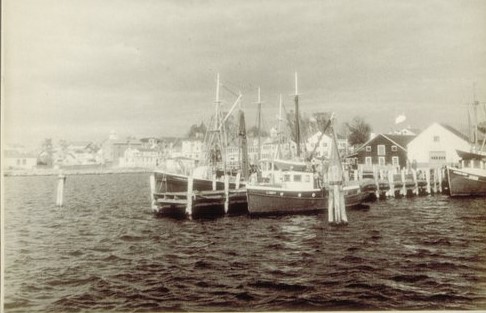By Nancy Finlay
New London in the early 19th century was a bustling port city. The 1850 Federal Census lists individuals from more than 30 different countries and from virtually every state in the Union. There are substantial numbers of Canadians, hundreds of Irish immigrants fleeing the potato famine, and Europeans from England, Scotland, and Wales, from Austria, Denmark, France, Germany, Italy, Spain, and Switzerland. There are a few who give their place of birth as Portugal, and many more who say that they were born in the Azores or the Cape Verde Islands—two archipelagoes colonized by the Portuguese. Others came from Asia Minor; Cape Town, South Africa; Chile; Hawaii; Papua, New Guinea; Saudi Arabia; and the island of St. Helena in the South Atlantic. While most of the men were mariners serving aboard ships and eventually returned to their homelands, some remained to build new lives in Connecticut. Many Portuguese sailors chose to stay.
The Portuguese Find Work in New London County
By the 1850s, New London, Stonington, and Norwich all had flourishing Portuguese communities. Women came to join their husbands, while other men married local residents, especially Irish immigrants, who like the Portuguese, were devout Roman Catholics. St. Mary’s Star of the Sea was established in New London in the 1840s, and St. Mary’s Catholic Church in Stonington was established in 1851 to serve these Portuguese families.
At first, many of the men continued to sign on for whaling voyages, but others found work in other maritime trades or worked for the steamboat lines or railroad. Other men and women worked in factories such as the Atwood Machine Company, the American Velvet Mill, and the Brown Cotton Gin Works. Women also ran boarding houses and worked as seamstresses. Two enterprising early immigrants started an ice company, cutting ice from a local pond for fishing boats, steamboats, and the railroad.
Still Following the Sea
As whaling declined in the late 19th century, the Portuguese persisted in the business, making up a larger proportion of the crews, sometimes rising to become captains and ship owners. The industry decline continued, however, as whales became increasingly scarce and petroleum and other products replaced whale oil. Some Portuguese mariners from Connecticut continued to make whaling voyages from New Bedford and Provincetown, Massachusetts, during the early decades of the 20th century, but the last whaleship sailed out of Stonington in 1892 and the last whaler left New London in 1908. Men who could no longer find work in the whaling industry turned to other maritime trades. After many years as a boat steerer on a New London whaler, Manuel Enos, who came to Connecticut from the Azores, joined the United States Revenue Cutter Service, a predecessor of the modern Coast Guard. Manuel E. Joseph of Stonington served as assistant keeper of the Latimer Reef Lighthouse in Block Island Sound.

Parade with Portuguese dancers at the Blessing of the Fleet, Stonington Borough in 1995 – Mystic Seaport Museum
Other Portuguese whalers became fishermen. For a time, mackerel, flounder, bluefish, and swordfish became the mainstays of the fishing fleet. By the mid-20th century, however, most of these species were also scarce or endangered, and the catch became largely limited to lobsters, scallops, and various types of flatfish. In 1954, the Portuguese community in Stonington instituted an annual Blessing of the Fleet, a European custom meant to assure to safe and bountiful season and to commemorate those fishermen lost at sea. The tradition continues to this day, though in 2021, the fleet consisted of just ten fishing and scallop boats and eight lobster boats. The Portuguese presence in New London County endures, however, as new waves of immigrants have continued to arrive during the 20th century. Today, Connecticut remains home to one of the densest concentrations of Portuguese-Americans in the United States.
Nancy Finlay grew up in Manchester, Connecticut. She has a BA from Smith College and an MFA and PhD from Princeton University. From 1998 to 2015, she was Curator of Graphics at the Connecticut Historical Society.










